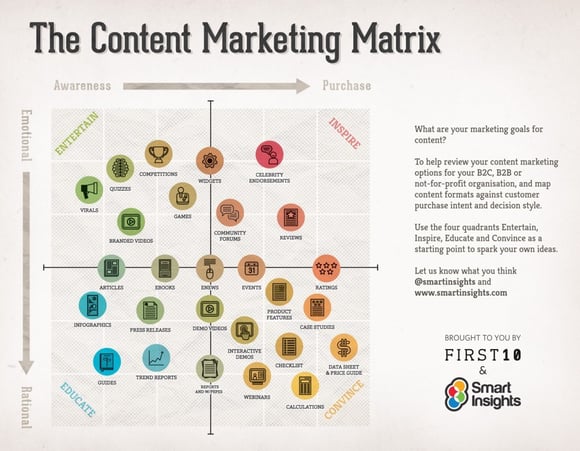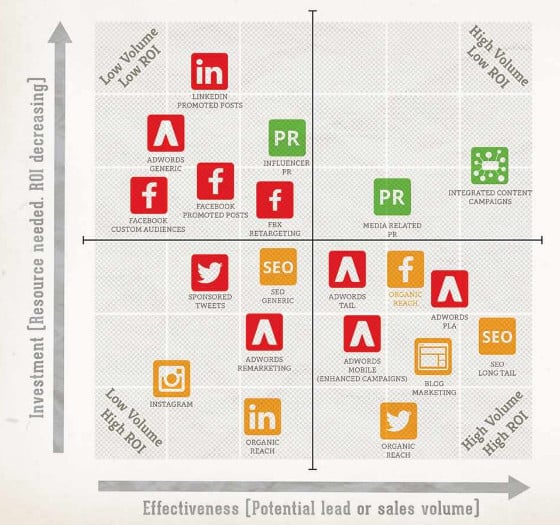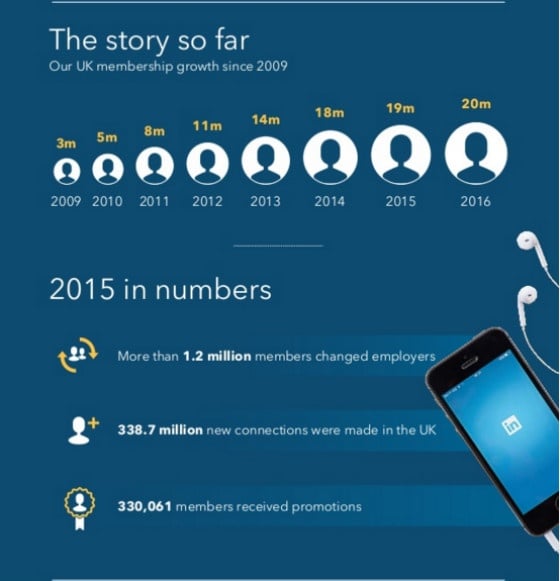The Perfect Persona - Are Your Personas Fit For Purpose?
Dr Dave Chaffey talks customer personas. How effective are yours? Find out more about what Dave recommends.
Read moreLast week, two of our top experts delivered an in-depth workshop session on search and content marketing at Smart Insights' Digital Impact 2014 conference. Big thanks to Dave Chaffey, ClickThrough's insights director and Smart Insights editor – not to mention all those who took part in the workshop!
In case you couldn't make it yourself, you can watch the whole presentation here. Take a look to discover how to ensure links are Google-compliant, how to use personas to drive your content strategy, and much more.
Here's a quick taster of one of the topics we covered: 5 Quick Tips to Boost Your Content Marketing Strategy.
Creating great content is only half the battle. To enjoy the fruits of content marketing success, you have to promote your content in a way that makes it easily accessible, and easily absorb-able by readers.
If you think this means churning new content out by the hour, think again. If you take this approach, you're only making things hard for yourself.
Whilst there is enormous value in producing fresh, unique content, you may already have reams of content that much of your customer base hasn't seen.
This could be a series of blog posts you can re-purpose for an eBook. Or an offline pamphlet you can turn into a series of blogs. Or it could be a pricing guide. Or some great reviews of your business. The list goes on.
By assessing the value of your existing content, and re-purposing it in a way that makes it visible to more users, you can make your life easier and add value to your users' experience.
Think about your content production in a structured, analytical, goal-orientated way, and you can say goodbye to writers' block for good. (Or should that be “content creators' block”?)
Ask yourself:
Smart Insights and First10 have put together this handy infographic to help you answer these questions and start creating awesome, goal-orientated content.
 See Smart Insights' original post here.
See Smart Insights' original post here.
Here's an example of how it can work. Say you want to create content that promotes brand awareness by appealing to emotions. This puts you squarely in the 'entertain' category, with suggestions of content like competitions, games and branded videos.
Or if you want to create sales-focussed content with a rational bent, you're in the 'convince' category – here you're best off creating content like webinars, interactive demos and pricing guides.
Define your goals and use the tried-and-tested methods outlined in the content marketing matrix, and you'll find it much easier to focus on achieving great results.
OK, so the matrix will help you make strategic decisions in regard to the content you create. But it can't help you come up with those awesome, one-of-a-kind ideas that help your content rocket into viral land.
For this, you have to rely on good-old-fashioned inspiration. So to get you started, here are four great blog posts full of amazing content marketing examples:
Fact: If you don't have a content calendar, your strategy risks drifting off into unstructured, ad-hoc, unmeasurable messiness.
Think like a publisher and put together a robust content calendar. Honestly. It makes life so much easier. If you haven't created one already, here's what your missing out on:
Which brings us on to...
There's little point in defining goals and putting a strategy together if you can't easily review its effectiveness.
Thankfully, with the right tools at your disposal, it's a doddle.
For this one, we'll pass the torch to our insights director Dr Dave Chaffey, who wrote a blog back in June on this very subject. Click through to discover four awesome tools you can use to optimise your content and discover gaps in your strategy.
Enjoyed this post? Remember to check out the full presentation here.
You might have missed: Technical SEO Best Practices – A Marketers' Guide.
More articles you might be interested in:
Dr Dave Chaffey talks customer personas. How effective are yours? Find out more about what Dave recommends.
Read more
Driving a lot of traffic to your website, but struggling to convert your traffic to leads?
Read more
Dr. Dave Chaffey considers what digital marketing tactics businesses should adopt for 2017, with content marketing once again proving a major focus...
Read more
Amy Dugmore brings you all the latest updates on LinkedIn, Kenshoo, Whatsapp, Facebook, and Pinterest in this week's social media news roundup.
Read more
Lisa Coghlan brings you all the latest social media marketing news from the past seven days, including Instagram’s new Partner Program, Pinterest...
Read more
Now is the time to start planning your content marketing strategy for 2016. However, before you start populating your editorial calendar, there’s...
Read moreMake 2016 a year of great content marketing. Plan your content calendar to include these five key elements to deliver great content, build team...
Read more
Dr. Dave Chaffey explains why having a Content Marketing Plan in place is vital to success
Read more